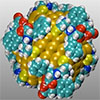 Researcheres tested the nanoparticles on human immune cells cultured in vitro and found that the chiral nanoparticles induced production of substances associated with an immune response even in the absence of an antigen.
Researcheres tested the nanoparticles on human immune cells cultured in vitro and found that the chiral nanoparticles induced production of substances associated with an immune response even in the absence of an antigen.
Apr 18th, 2022
Read more
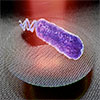 Have you ever wondered if bacteria make distinctive sounds? If we could listen to bacteria, we would be able to know whether they are alive or not. When bacteria are killed using an antibiotic, those sounds would stop - unless of course the bacteria are resistant to the antibiotic. This is exactly what a team of researchers now have managed to do.
Have you ever wondered if bacteria make distinctive sounds? If we could listen to bacteria, we would be able to know whether they are alive or not. When bacteria are killed using an antibiotic, those sounds would stop - unless of course the bacteria are resistant to the antibiotic. This is exactly what a team of researchers now have managed to do.
Apr 18th, 2022
Read more
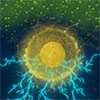 Researchers discovered a novel way to combine curcumin and gold nanoparticles to create an electrode that requires 100 times less energy to efficiently converts ethanol into electricity.
Researchers discovered a novel way to combine curcumin and gold nanoparticles to create an electrode that requires 100 times less energy to efficiently converts ethanol into electricity.
Apr 18th, 2022
Read more
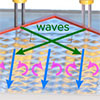 Water waves can be used to visualize fundamental concepts, such as spin angular momentum, that arise in relativistic field theory, physicists have shown. This will help to provide new insights into very different wave systems.
Water waves can be used to visualize fundamental concepts, such as spin angular momentum, that arise in relativistic field theory, physicists have shown. This will help to provide new insights into very different wave systems.
Apr 18th, 2022
Read more
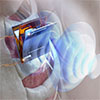 Improved efficiency of wireless energy transfer of ultrasonic waves by triboelectric power generation. Ultrasonic waves have applications in wireless charging of batteries underwater or in body-implanted electronic devices.
Improved efficiency of wireless energy transfer of ultrasonic waves by triboelectric power generation. Ultrasonic waves have applications in wireless charging of batteries underwater or in body-implanted electronic devices.
Apr 18th, 2022
Read more
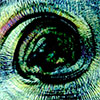 Scientists have created synthetic nanoclusters that can mimic Nature's hierarchical self-assembly all the way from the nanometer to the centimeter scale, spanning seven orders of magnitude. The resulting synthetic thin films have the potential to serve as a model system for exploring biomimetic hierarchical systems and future advanced functions.
Scientists have created synthetic nanoclusters that can mimic Nature's hierarchical self-assembly all the way from the nanometer to the centimeter scale, spanning seven orders of magnitude. The resulting synthetic thin films have the potential to serve as a model system for exploring biomimetic hierarchical systems and future advanced functions.
Apr 16th, 2022
Read more
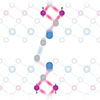 Researchers have discovered a new 'knob' to control the magnetic behavior of one promising quantum material, and the findings could pave the way toward novel, efficient and ultra-fast devices.
Researchers have discovered a new 'knob' to control the magnetic behavior of one promising quantum material, and the findings could pave the way toward novel, efficient and ultra-fast devices.
Apr 16th, 2022
Read more
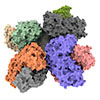 Researchers have obtained atomic-level insights into the structure of the phosphoketolase enzyme, which will help researchers optimize this enzyme for chemical feedstock synthesis.
Researchers have obtained atomic-level insights into the structure of the phosphoketolase enzyme, which will help researchers optimize this enzyme for chemical feedstock synthesis.
Apr 16th, 2022
Read more
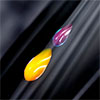 Something as simple as the motion of water drops on surfaces should actually be understood - one would think. In fact there are still numerous unanswered questions about the forces acting on a sliding droplet. Scientists have now discovered that in addition to surface energy and viscous friction within the droplet, electrostatics also play a significant role.
Something as simple as the motion of water drops on surfaces should actually be understood - one would think. In fact there are still numerous unanswered questions about the forces acting on a sliding droplet. Scientists have now discovered that in addition to surface energy and viscous friction within the droplet, electrostatics also play a significant role.
Apr 14th, 2022
Read more
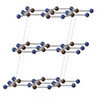 Researchers settle the debate on the relative stabilities of boron nitride's structures using a state-of-the-art quantum simulation method.
Researchers settle the debate on the relative stabilities of boron nitride's structures using a state-of-the-art quantum simulation method.
Apr 14th, 2022
Read more
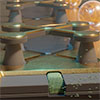 Scientists succeeded in integrating a topological insulator into a conventional superconducting qubit.
Scientists succeeded in integrating a topological insulator into a conventional superconducting qubit.
Apr 14th, 2022
Read more
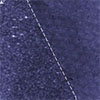 Study uncovers first method for producing high-quality, wafer-scale, single-layer hexagonal boron nitride.
Study uncovers first method for producing high-quality, wafer-scale, single-layer hexagonal boron nitride.
Apr 14th, 2022
Read more
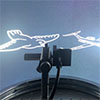 New design could enable high-quality wide-angle cameras that can possibly fit into smartphones.
New design could enable high-quality wide-angle cameras that can possibly fit into smartphones.
Apr 14th, 2022
Read more
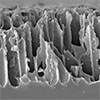 New research connects the porous structure of silicon and its ability to 'trap' incident light.
New research connects the porous structure of silicon and its ability to 'trap' incident light.
Apr 14th, 2022
Read more
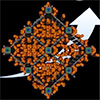 The extraction of deuterium from its natural isotope mixture has so far been complex and expensive. With a porous MOF material, this could soon be done more efficiently and cost-effectively.
The extraction of deuterium from its natural isotope mixture has so far been complex and expensive. With a porous MOF material, this could soon be done more efficiently and cost-effectively.
Apr 14th, 2022
Read more
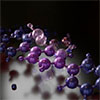 Chemical syntheses in liquids and gases take place in three-dimensional space. Random collisions between molecules have to result in something new in an extremely short time. But there is another way: on a gold surface under ultrahigh vacuum conditions, molecules lying still next to each other can be made to combine - even those that would never want to react with each other in a liquid.
Chemical syntheses in liquids and gases take place in three-dimensional space. Random collisions between molecules have to result in something new in an extremely short time. But there is another way: on a gold surface under ultrahigh vacuum conditions, molecules lying still next to each other can be made to combine - even those that would never want to react with each other in a liquid.
Apr 14th, 2022
Read more
 Researcheres tested the nanoparticles on human immune cells cultured in vitro and found that the chiral nanoparticles induced production of substances associated with an immune response even in the absence of an antigen.
Researcheres tested the nanoparticles on human immune cells cultured in vitro and found that the chiral nanoparticles induced production of substances associated with an immune response even in the absence of an antigen.















 Subscribe to our Nanotechnology News feed
Subscribe to our Nanotechnology News feed